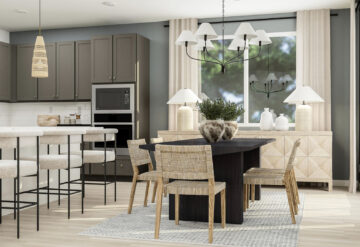You may have heard about the many benefits of LED bulbs. Versatility, long life and cost effectiveness make them an attractive option for your home. Ready to swap your incandescents for LEDs? Sharon Profis for CNET shares what you need to know before heading to the home improvement store.
Because there are so many LED varieties, choosing an LED is entirely different from picking up an incandescent. Before you head to the store, find out what you need to know about choosing the right LED bulbs.
Lumens, not watts
Forget what you know about incandescents — your watts are no good here.
When shopping for bulbs, you’re probably accustomed to looking for watts, an indication of how bright the bulb will be. The brightness of LEDs, however, is determined a little differently.
Contrary to common belief, wattage isn’t an indication of brightness, but a measurement of how much energy the bulb draws. For incandescents, there is an accepted correlation between the watts drawn and the brightness, but for LEDs, watts aren’t a great predictor of how bright the bulb will be. (The point, after all, is that they draw less energy.)
For example, an LED bulb with comparable brightness to a 60W incandescent is only 8 to 12 watts.
But don’t bother doing the math — there isn’t a uniform way to covert incandescent watts to LED watts. Instead, a different form of measurement should be used:lumens.
The lumen (lm) is the real measurement of brightness provided by a light bulb, and is the number you should look for when shopping for LEDs. For reference, here’s a chart that shows the watt-lumen conversion for incandescents and LEDs.
As you can see in the chart above, an incandescent can draw up to five times as many watts for the same number of lumens. Get a sense of the brightness (in lumens) you need before heading to the store, and throw away your affinity for watts.
Choosing the right color LED
You can always count on incandescents providing a warm, yellowish hue. But LEDs come in a wide range of colors.
As shown off by the Philips Hue, LED bulbs are capable of displaying an impressive color range, from purple to red, to a spectrum of whites and yellows. For the home, however, you’re likely looking for something similar to the light that incandescents produce.
The popular colors available for LEDs are “warm white” or “soft white,” and “bright white.”
Warm white and soft white will produce a yellow hue, close to incandescents, while bulbs labeled as bright white will produce a whiter light, closer to daylight and similar to what you see in retail stores.
If you want to get technical, light color (color temperature) is measured in kelvins. The lower the number, the warmer (yellower) the light. So, your typical incandescent is somewhere between 2,700 and 3,500K. If that’s the color you’re going for, look for this range while shopping for LED bulbs.
Read the full article: Five things to consider before buying LED bulbs – CNET




